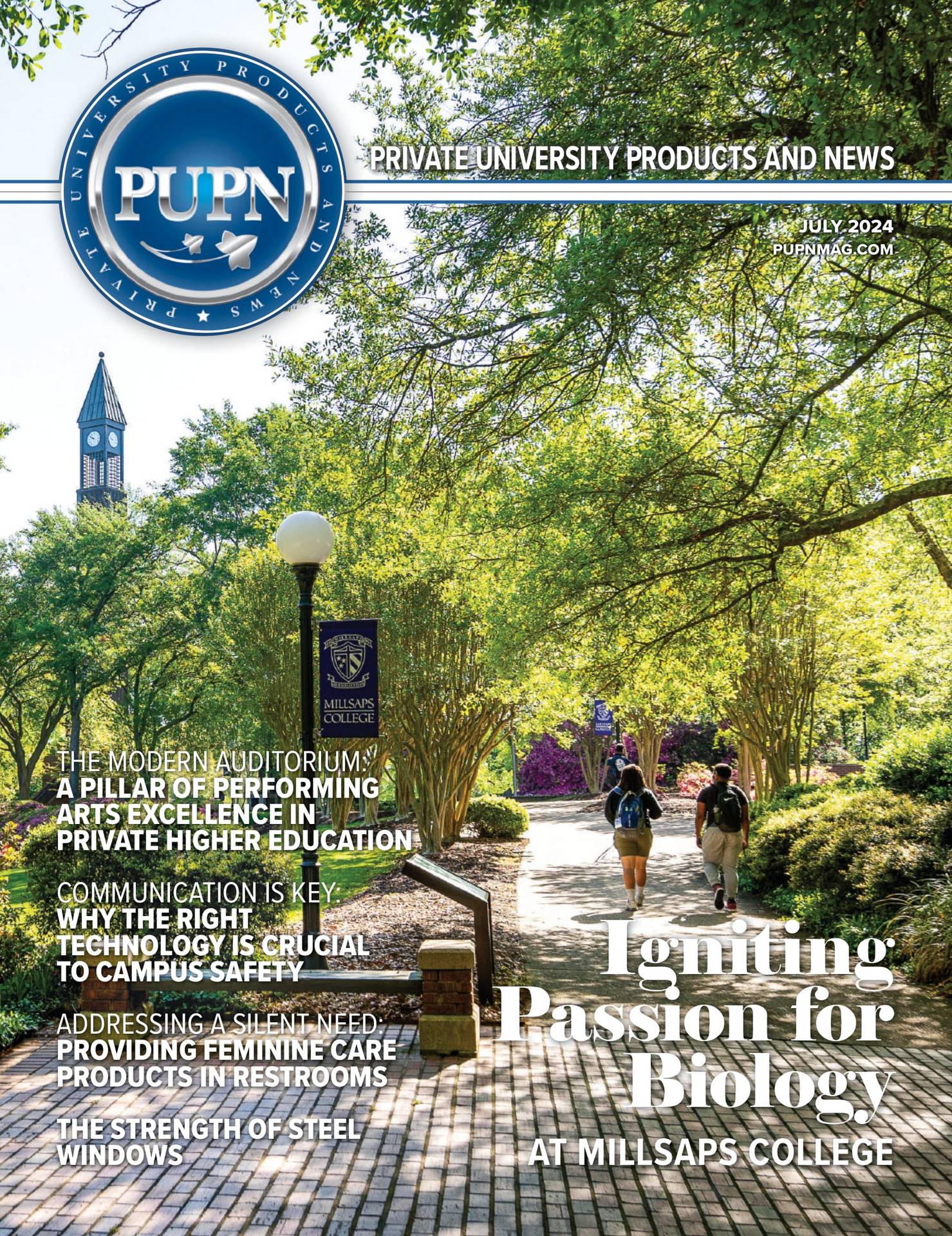1. Limit Building Entry Points
While many buildings on a university campus naturally have multiple entrance and exit points, universities should consider restricting access to one or two main entry/exit points for student and public access. This means that the majority of doors to a campus building should remain locked from the outside, accessible only in case of an emergency. Back entrance doors for use by designated personnel should include an entry-control system that requires the use of an access control credential such as an access control badge or key pin. This will also create an access control log that can provide useful data in the future.
2. Use Intercoms to Keep the Front Office Secure
The main advantage of funneling building access to a central entrance point is that it allows university staff to screen visitors before permitting them to enter. In some buildings, such a secure science building or floor in a science building, visitors can enter the lobby but need to be vetted by the front office before gaining full access to the building. To assist with this process, colleges have installed intercom systems that enable the building staff to communicate with a visitor first before unlocking a door to allow that person to enter. Intercom systems that include an IP video camera enable staff or security personnel to visually verify the identity of an individual. It can also help to see if a visitor is carrying any weapons or if a person is agitated in any way so that staff can contact security if there is a safety concern.
3. Invest in an Access Control System
A lock and key are no longer enough to keep a college building secure or to manage building access. This is especially true in dormitory settings, where it’s recommended that universities invest in an access control system that can safely manage entrances and generate access control reports. With an access control system in place, colleges and universities can keep a dormitory safe and secure by ensuring only students who live there can gain access at any time. For academic buildings, an access control system helps easily manage when a staff member has access to a building, such as limiting access during the hours of 1 a.m. to 5 a.m., or revoking access privileges when an employee no longer works for the university. An access control system can also generate an alert and send a notification to campus security when a door does not close properly, an obvious threat to the security of the building and its occupants.
4. Leverage Visitor Management Tools
University campuses are bustling environments consisting of a variety of people, from students and professors to prospective students and their families touring campus or even vendors. Knowing who is in a building at any given time and the length of their visit can be a challenge to track using old-fashioned paper logs. Many access control systems today come with visitor management capabilities and the ability to create temporary visitor credentials that can restrict a visitor’s access to certain areas of a building when used in conjunction with a door entry control system. The visitor credentials can also be programmed to send a notification to staff if the visitor doesn’t return to the main entrance by a certain time to log out.
5. Integrate Multiple Security Systems
Security technology should never be siloed, with systems operating independently of one another. Instead, campus security directors should look to integrate systems wherever possible to take full advantage of the information connected systems provide. One overlooked integration opportunity includes integrating video from a video intercom system with a third-party video management system. By connecting video from a video intercom system used at a building entry point campus with the video-management system (VMS), campus security gains seamless access to that video and recording capabilities.
6. Secure Parking Lots with Emergency Towers
While much of the focus on university security zeroes in on buildings, it’s also important to remember that parking lots and parking garages also need security tools. Parking structures are often quite large, void of many people, and located away from a physical building, making them a safety threat. In a large parking garage or expansive surface lots, the ability to find help in the event of an emergency can prove to be very difficult. A reliable, network-connected emergency tower can be easy to locate thanks to their tall design and bright colors.
When someone presses a button on an emergency tower, the person on the receiving end knows exactly where that tower is located, taking the guesswork out of trying to pinpoint a location in a sea of vehicles. In the event of an emergency, when a video intercom system paired with an emergency tower is located inside a parking garage it allows a security officer to speak with the individual who is calling about an emergency. An optional overhead camera attachment can also provide a bird’s-eye view of the person in distress.
University security has made significant advancements over the past few decades thanks to continuous investments in technology. Ensuring the safety of individuals on a college campus remains an ongoing concern that necessitates regular reviews of the technologies deployed and the maintenance of best practices in building safety and access policies.










